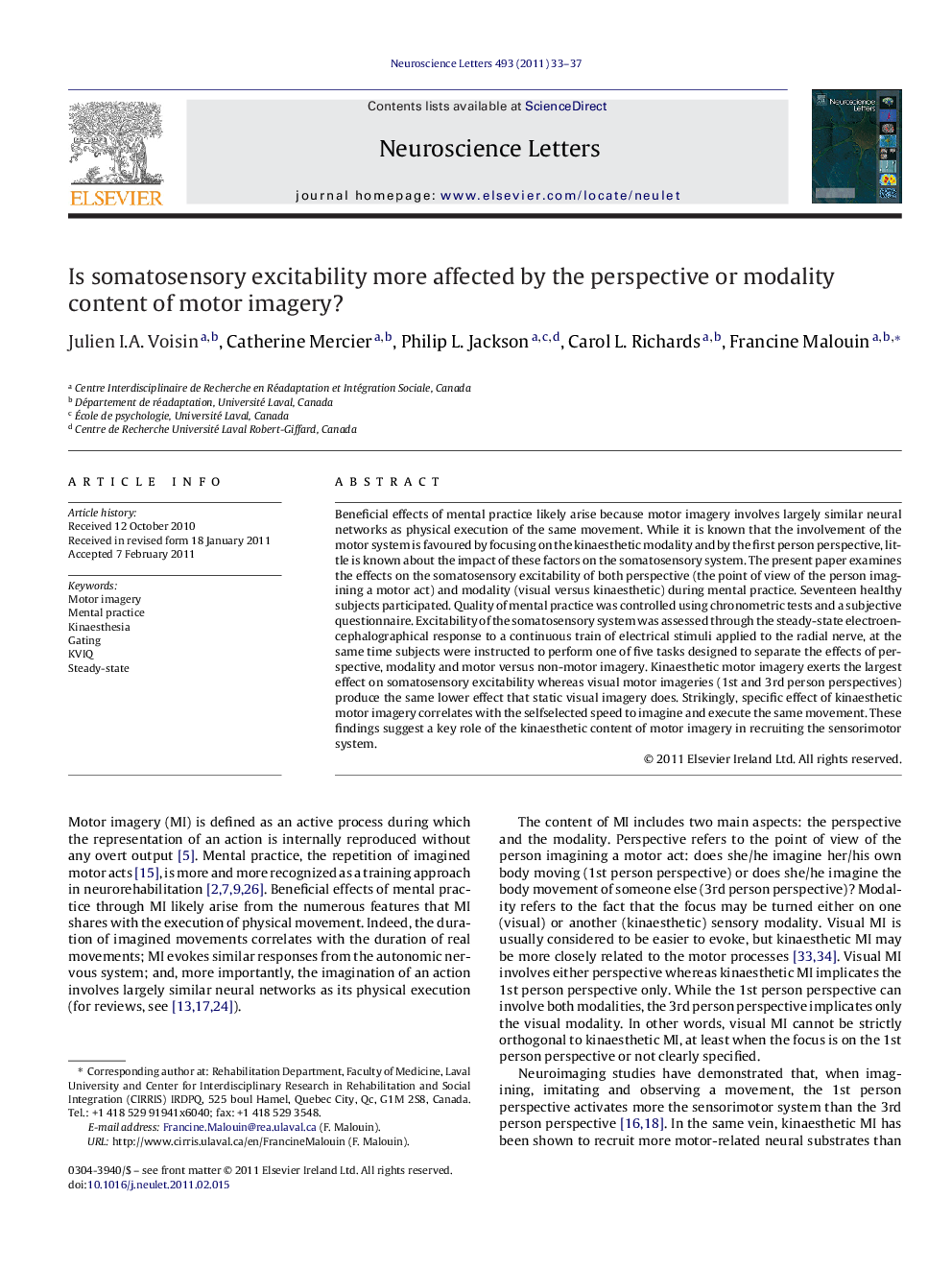| Article ID | Journal | Published Year | Pages | File Type |
|---|---|---|---|---|
| 4345434 | Neuroscience Letters | 2011 | 5 Pages |
Beneficial effects of mental practice likely arise because motor imagery involves largely similar neural networks as physical execution of the same movement. While it is known that the involvement of the motor system is favoured by focusing on the kinaesthetic modality and by the first person perspective, little is known about the impact of these factors on the somatosensory system. The present paper examines the effects on the somatosensory excitability of both perspective (the point of view of the person imagining a motor act) and modality (visual versus kinaesthetic) during mental practice. Seventeen healthy subjects participated. Quality of mental practice was controlled using chronometric tests and a subjective questionnaire. Excitability of the somatosensory system was assessed through the steady-state electroencephalographical response to a continuous train of electrical stimuli applied to the radial nerve, at the same time subjects were instructed to perform one of five tasks designed to separate the effects of perspective, modality and motor versus non-motor imagery. Kinaesthetic motor imagery exerts the largest effect on somatosensory excitability whereas visual motor imageries (1st and 3rd person perspectives) produce the same lower effect that static visual imagery does. Strikingly, specific effect of kinaesthetic motor imagery correlates with the selfselected speed to imagine and execute the same movement. These findings suggest a key role of the kinaesthetic content of motor imagery in recruiting the sensorimotor system.
Research highlights► Mental imagery impacts somatosensory excitability. ► Focusing on kinaesthetic aspects during motor imagery maximizes the effect. ► The effect correlates with the ease one imagines or performs a movement.
